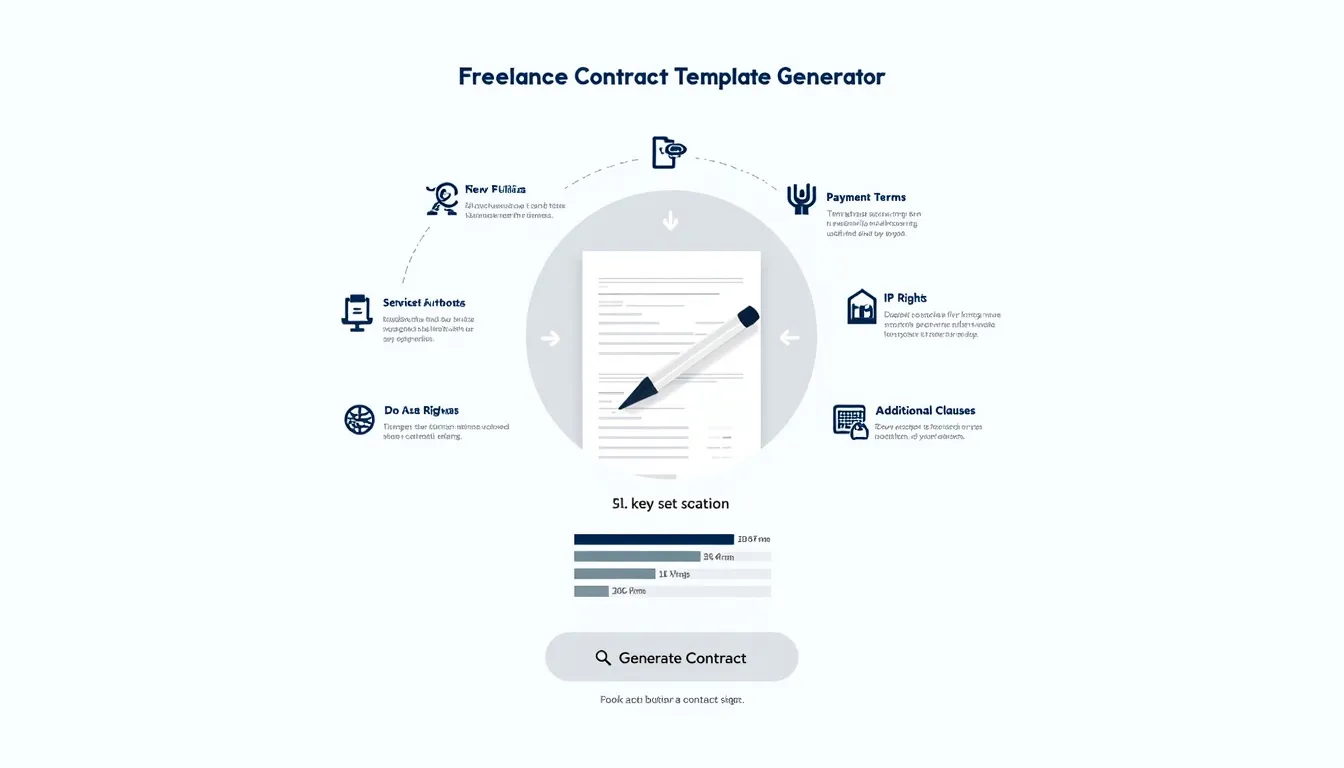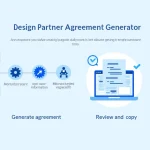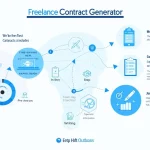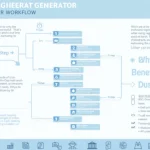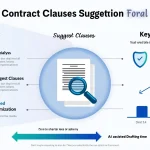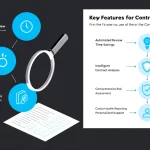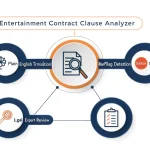Is this tool helpful?
How to use the tool
- Describe your services. State what you will deliver.
Example 1: “Design a cross-platform Flutter app with Firebase integration.”
Example 2: “Provide bilingual copy-editing for peer-reviewed journals.” - Define payment terms. Enter rates, schedule, and method.
Example 1: “£60 / hour, weekly invoices via Stripe.”
Example 2: “€3,000 fixed fee—40 % upfront, 30 % mid-project, 30 % on delivery.” - Add timeline, IP rights, confidentiality, termination, and extra clauses. Only the bold-labeled fields are mandatory; optional fields refine expectations.
- Click “Generate Contract Template.” The server (action = process_llm_form) sends back structured contract text ready for review.
- Copy, save, and edit. Use “Copy to Clipboard,” paste into your preferred editor, and tailor wording before signing.
Quick-Facts
- Written contracts reduce scope creep incidents by 50 % (Harvard Business Review, 2021).
- Average freelancer hourly rate: US $28 (Payoneer Global Freelancer Report, 2022).
- Non-disclosure clauses remain enforceable for up to 5 years in 38 U.S. states (NDA Survey, ContractsCounsel 2023).
- “Work for hire” transfers copyright only after full payment (U.S. Copyright Office, Circular 30).
What does the generator produce?
The tool returns a plain-text contract covering scope, payment, timeline, IP, confidentiality, termination, and extra clauses—all in one scrollable block.
Is the template legally binding?
A signed contract becomes enforceable if it meets local contract-law requirements: offer, acceptance, consideration, and lawful purpose (ABA, 2020).
Can I reuse the template for multiple clients?
Yes. Adjust project-specific details, then secure signatures electronically or on paper for each engagement (DocuSign Legal Guide, 2022).
How secure is my data?
Form data transmits over HTTPS and is not stored after processing, complying with GDPR “data-minimization” rules (EU 2016/679, Recital 39).
Can I adapt the contract for international work?
Add governing-law and currency clauses; consult a lawyer about VAT and jurisdiction differences (WIPO Cross-Border Contracts Guide, 2021).
How often should I update my standard contract?
Review annually or when laws change—e.g., new consumer-protection rules in the U.K. Digital Markets Act 2023 (U.K. Parliament, 2023).
Which clauses protect my intellectual property?
Use a “work-for-hire” or license clause specifying transfer timing and usage limits; cite copyright law section 203 for reversions (U.S. Copyright Office, 2022).
What if a client refuses to sign?
Pause work. “Written contracts minimize misunderstandings and provide clear evidence of agreement” (ABA, 2020). Without a signature, payment recovery is harder.
Important Disclaimer
The calculations, results, and content provided by our tools are not guaranteed to be accurate, complete, or reliable. Users are responsible for verifying and interpreting the results. Our content and tools may contain errors, biases, or inconsistencies. We reserve the right to save inputs and outputs from our tools for the purposes of error debugging, bias identification, and performance improvement. External companies providing AI models used in our tools may also save and process data in accordance with their own policies. By using our tools, you consent to this data collection and processing. We reserve the right to limit the usage of our tools based on current usability factors. By using our tools, you acknowledge that you have read, understood, and agreed to this disclaimer. You accept the inherent risks and limitations associated with the use of our tools and services.
